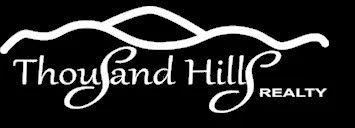Thousand Hills Realty

Property Inspection #1 - “The Move-In”
The first type of inspection is the move-in inspection. This inspection is usually done when a new tenant is moving into a rental apartment, condo or home. During this inspection, the property is inspected for imperfections in cosmetic or surface issues. Items looked for in this category may be imperfections in the paint, cracks in the tile, or dings in the woodwork. These normal “wear and tear” items will be marked down ahead of time to make sure the new tenant is not charged for damages that were already present when they moved into the unit.
Also during this inspection, the property will be inspected for major imperfections which may need to be addressed immediately or in the near future, to ensure the comfort and the safety of the new tenant. Issues which would be considered top priority to fix would be any problems with the heating and cooling system, electrical issues, plumbing problems or water leaks, etc. Once these are found, the work order will be processed to have repairs made as necessary.
Inspection #2 - “The Safe and Clean”
The second of the 4 types of inspections your property manager will do for you is called a safe and clean inspection. Usually done quarterly, this inspection would involve someone from the property management company, or someone hired by the company, going into the property and checking to make sure that the home is being properly taken care of and that the systems are all working correctly.
Often these inspections will include checking the furnace and AC unit, thermostats, and changing the air filters. The unit may also be inspected for any water leaks or plumbing issues at this time.
Visually, the apartment or home will be checked to verify that the home is still in good condition and that there are no health or safety concerns that need to be addressed with the tenant. This inspection is also a prime opportunity to ensure that there are no lease violations taking place as well. Violations of someone’s lease may include: an unauthorized pet, smoking within the unit, or someone living there that is not on the lease. These violations would differ, based on each individual tenant’s lease terms.
Inspection #3 - “The Drive-By”
The third inspection, called a drive-by, is a quick assessment of the property. From off the property, a visual only inspection takes place. The purpose of this inspection is to get a good look at the exterior of the property, while making sure that it is being well cared for. Roof, siding, and windows may be checked.
This inspection is also helpful to check for any lease violations. Exterior violations may include unauthorized pets, grills that are not permitted or parking violations. Parking without a sticker or having more vehicles than allowed may cause the need to contact and address the issue with the tenants. If it is a house that is being inspected, the yard may be visually inspected to make sure the lawn maintenance requirements are being met as required.
Inspection #4 - “ The Move-Out”
The final inspection of the 4 property inspections your property manager will do for you is going to be the move out inspection. This last inspection is very important and will determine the condition the rental unit has been left in by the former tenant or tenants. Any issues or damages that are found during this inspection will be charged back to the renters who were living there and just moved out. These charges generally come out of the security deposit that is being held from the time of move in.
Similarly to the move-in inspection, the move-out inspection will address many of the same cosmetic issues. In addition to many other issues, damages to the tile floors, unreasonable holes in the walls, and staining on the carpets are all things that will be looked at during this move-out inspection. If the unit came furnished, the furniture will be assessed for damage, tears in upholstery or broken furnishings. An inventory list will be verified to make sure all pieces that the unit is furnished with still remain.
The last part of this inspection is for cleanliness. Have the carpets been professionally cleaned? Are the toilets and the counters in the bathrooms clean? Is the oven clean and ready to use? Generally a list of cleaning requirements will be given to the tenant before move-out, so they have the opportunity to know what the property manager will be looking for and what requirements need to be met in order to be sure they receive their full security deposit back. The unit should be left in the same clean and move-in ready condition it was in upon their move-in.
Each one of these 4 property inspections your property manager will do for you, is an important one. While they each may have their own purpose, the main goal of each inspection is the same. That goal is making sure that your investment property is being used and taken care of to the standards that are expected.



